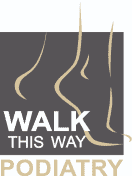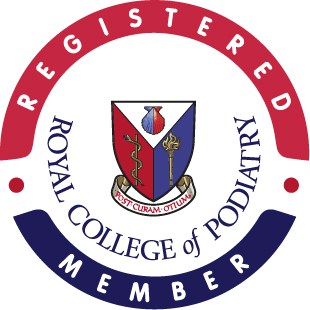How to relieve heel pain Heel pain is a common condition that can occur due to various reasons, including plantar fasciitis, heel spurs, stress fractures, Achilles tendonitis, and others.
The constant trauma of landing hard on your heel and the lack of arch support from some footwear can cause the band of tissue running the length of your foot (the plantar fascia) to stretch and tear, leading to heel pain.
Pain in your heels can be persistent and may require treatment for a few months. Treating heel pain can be as simple as refraining from the activity that causes the pain (for example, running) and allowing damaged tissue to heal. In more severe and chronic cases, however, it can require a combination of different approaches.
The treatment of heel pain depends on the underlying cause. Rest, ice, stretching, and physical therapy are common treatments for mild cases. Other treatments for heel pain include:
1. Change of footwear Shoes play a crucial part in maintaining healthy feet. However, wearing the wrong footwear can, over time, damage your feet’s natural structure and exacerbate heel pain. Although most injuries tend to be attributed to the abusive wear of high heels, there are just as many caused by wearing the wrong flats. A two-inch lift in the back of your shoe is just the right height to take pressure off the Achilles tendon and relieve pain. In addition, your shoes should be able to hold your feet, giving your toes enough room to move, stretch, and mould around your feet for full support.
2. Custom foot orthotics
Orthotics are a common treatment for heel pain as they can alleviate discomfort by providing arch support and distributing pressure evenly across the foot.
Orthotic insoles are designed to address the specific structural contours of your own foot. They support the longitudinal and transverse arch of your feet while adding cushioning for shock absorption. The idea of these insoles is to raise the heel and, as a result, reduce the stress on the tendon and change the plantar pressures under your feet.
Wearing orthotic insoles doesn’t need to interrupt your daily routine or prevent you from enjoying physical activity. The latest models can be made to fit into even the lowest of leather frames, so your style doesn’t need to suffer too.
3. Foot mobilisation
This is a highly effective method to establish the areas of your foot and ankle where the joints are affected, resulting in limited mobility and pain. In addition, it helps identify which joints are stiff, poorly aligned or not functioning as they should and manipulate them to restore their normal range of motion.
Foot mobilisation is a manual therapy that works by gently moving every bone and joint in your foot and ankle to stretch the surrounding joint soft tissue to promote repair and improve overall mobility.
4. Acupuncture
Acupuncture can be very effective when treating heel pain. This Eastern technique places tiny needles on specific points in your feet and ankle to stimulate nerves. This triggers the brain to release neural hormones that can help lower stress, pain, and inflammation.
Because acupuncture can be helpful for chronic pain and inflammation, it is an excellent supplemental treatment for heel pain. Although acupuncture can be used to relieve symptoms, it won’t cure heel pain on its own, so you should consider using it in combination with other treatments.
5. Strapping
An easy and quick way to temporarily release pain and support your foot is with strapping.
Heel strapping works by reducing the strain on the ball of your foot and heel, which in turn reduces pain. The tape is applied strategically to your foot and ankle to provide support, lessen pain, reduce swelling, enhance strength and muscle tone and improve performance.
Heel strapping can also help support weak or injured muscles and stabilise an area without restricting movement.
You should always consult your podiatrist before using tape on your foot, as they can tell you how to apply it correctly and if it’s safe for your condition.
6. Shockwave therapy
Like other types of energy treatments, shockwave therapy projects electrical pulses to the specific damaged tissue inside the tendon. This increases the blood flow within the affected area, stimulating cell regeneration and healing and decreasing local factors which can cause pain.
The treatment takes five minutes and requires three sessions, one to two weeks apart. You might experience mild discomfort during the treatment; symptoms are often made a little worse before they get better.
7. Rehabilitation programme
If you suffer from chronic heel pain or have had an injury that’s affecting your ability to walk, you’re very likely to go through a personalised rehabilitation programme, which includes a combination of some of the treatments above, such as:
● a course of shockwave therapy to accelerate healing and cure heel pain
● custom foot orthotics to improve or change your foot function and address deformity or dysfunction when walking
● an exercise programme to lengthen tight muscles, strengthen weak muscles and re-educate your gait (basically, we teach you how to walk better).
● some level of strapping may also be applicable.
Each rehabilitation programme is tailored to the severity of your symptoms, taking into consideration your lifestyle and personal needs too.
The constant trauma of landing hard on your heel, and the lack of arch support from some footwear can cause the band of tissue running the length of your foot (the plantar fascia) to stretch and tear, leading to heel pain. You can read more about what causes heel pain here. (LINK to other blog.)
Pain in your heels can be persistent and may require to be treated for a few months.
Treatment for heel pain can be as simple as refraining from the activity that causes the pain (for example running) and allowing any damaged tissue to heal. In more severe and chronic cases, however, it can require a combination of different approaches.
Treatments that can help you recover from heel pain vary depending on the severity of the symptoms:
- Change of footwear
Shoes play a crucial part in maintaining healthy feet. Wearing the wrong footwear can over time damage your feet’s natural structure and exacerbate heel pain. Although the majority of injuries tend to be attributed to the abusive wear of high-heels, there are just as many caused by wearing the wrong flats.
A two-inch lift in the back of your shoe is just the right height to take pressure off of the Achilles tendon and relieve pain. Your shoes should be able to hold your feet, giving your toes enough room to move and stretch and moulding around your feet for full support.
- Custom foot orthotics
For more acute foot pain, custom foot orthotic insoles may be prescribed.
Orthotic insoles are designed to address the specific structural contours of your own foot. They support the longitudinal arch and the transverse arch of your feet, while adding cushioning for shock absorption. The idea of these insoles is to raise the heel and as a result, reduce the stress on the tendon and change the plantar pressures under your feet.
Wearing orthotic insoles doesn’t need to interrupt your daily routine or prevent you from enjoying physical activity. The latest models can be made to fit into even the lowest of leather frames, so your style doesn’t need to suffer too.
Will heel pain go away on it’s own?
In general, heel pain may go away with proper treatment and management. However, seeking medical attention and talking to your podiatrist if the pain persists or worsens is essential, as this may indicate a more severe condition. Additionally, preventative measures such as wearing proper footwear, stretching regularly, and maintaining a healthy weight can help reduce the risk of heel pain.
Our specialist musculoskeletal podiatrist can help you relieve heel pain so you can enjoy life to the fullest. Book a consultation now.







